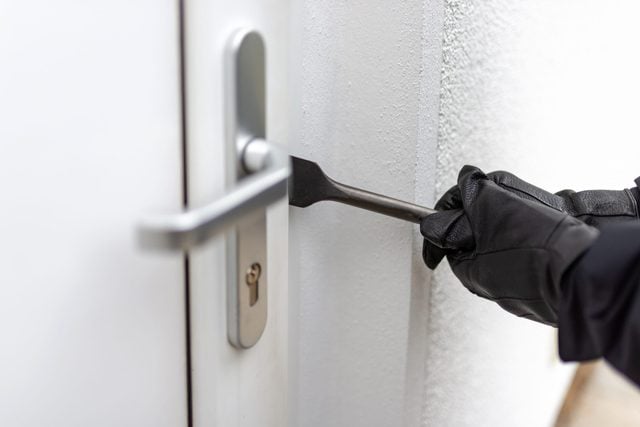
Your home
Millions of homes will be burglarized this year. Here’s how to make sure yours isn’t one of them. From paying more attention to your front door to locking your glovebox, here are a few things you can do to protect yourself.
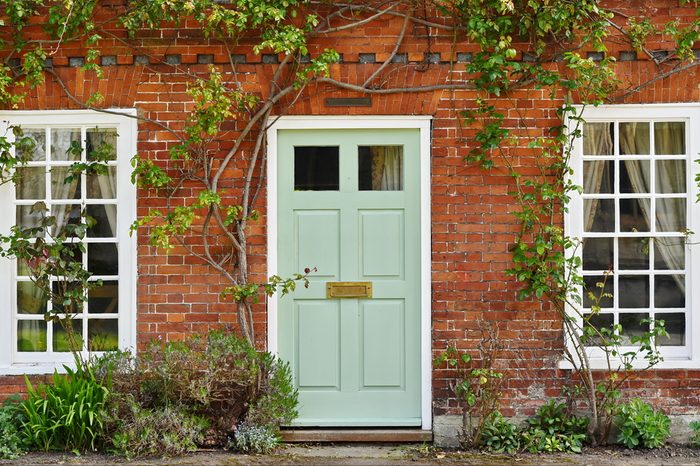
Your front door
This may seem too obvious to be true, but the majority of intruders come in through a door—and many of them are already open. Why? It’s easy access and burglars are all about doing whatever is easiest, says Jacob Paulsen, security expert, creator of Complete Home Defense DVDs. One in four homeowners confesses to frequently leaving the front door unlocked and half do it occasionally, according to a Nationwide Insurance survey. And considering that the majority of home burglaries happen in the daytime, between 6 a.m. and 6 p.m., according to the Bureau of Justice, knocking on your front door allows thieves to pose as salesmen or delivery people while covertly checking your doorknob. So, yes, it’s obvious, but we’ll say it again: Lock your door! In addition, replace any hollow-core or sectioned doors with ones made from a solid piece or wood or metal, Paulsen suggests. While you’re at it, learn the 21 more secrets burglars won’t tell you.
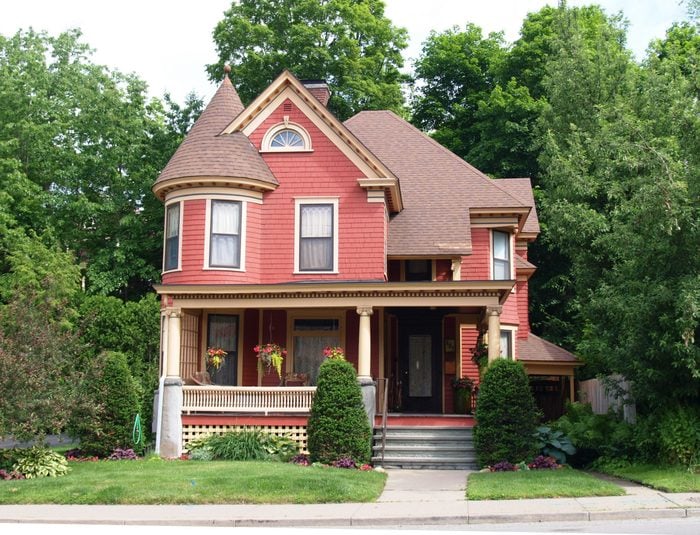
Your porch
People stealing packages off your front porch—aka porch pirates—is one of the fastest rising crime trends. Nearly ⅓ of people have had packages stolen and over half of people say they know someone who has, according to a survey done by Comcast. Thieves have even been known to follow delivery trucks around neighborhoods, stealing packages almost as soon as they’re dropped off. Having a doorbell camera may deter some would-be pirates but your best defense is not having your packages delivered to your porch, Paulsen says. “Have packages delivered to your office or to a neighbor who is home most of the time,” he advises. “If those aren’t options, consider putting delivery instructions on the order form to leave the package at a side door or in a special box.” P.S. Your mail carrier can actually help prevent porch pirates and other problems.

Your garbage cans
The good news: Property crimes have been decreasing steadily for the past decade, according to the most recent FBI data. But that doesn’t mean you can let your guard down. Setting out the box from your new 60-inch HDTV or high-end gaming console on the curb is basically advertising the fact that those items are in your home. As electronics are the second thing burglars go for (cash is number one), this makes your home a very attractive target, according to the study. So buy a cheap box cutter and invest the 30 seconds it takes to break down large boxes and bundle them together so their labels can’t be seen. Plus, your garbage collector will thank you!
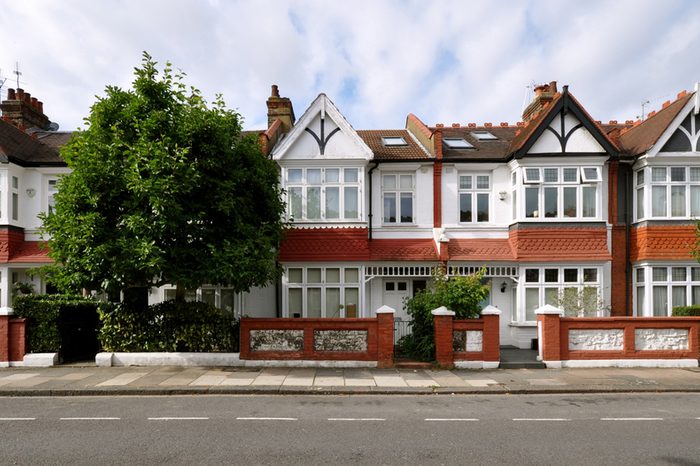
Your street
Thanks to better lighting and increased traffic, homes in high-visibility places, like on corner lots, are far less likely to be broken into, Paulsen says. There are simply too many potential ways to be seen. But townhomes, houses in the middle of the block, or houses in a cul-de-sac are much better targets (with these home security systems, you can stay safe.) This is especially true if your property backs up to a forest, open lot, or another unguarded area. The trick, he says, is to make your house as difficult as possible to access from all sides. How much? “You don’t have to be Fort Knox, you just have to be less appealing to a thief than your neighbor is,” he adds. Learn 13 sneaky things FBI agents do to protect their homes.

Your health
As the opioid epidemic rages, thefts of drugs, particularly prescription painkillers, are on the rise, according to the Department of Justice. And as heartbreaking as it is to say, both professional thieves and junkies know that people who are elderly or chronically ill often have lots of medication lying around. So if you are in these circumstances, it might be worth taking extra precautions (such as installing a good home security system) to make your house a less attractive target, Paulsen says.
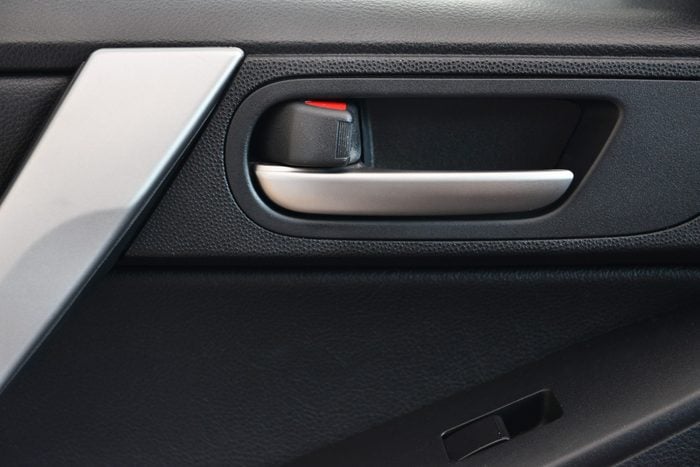
Your car
Breaking into your car is often the first step to breaking into your home, Paulsen says. Things like car registrations, insurance cards, checkbooks, mail, packages, and even pharmacy receipts not only show your home address but can offer big clues to what kind of valuables you may own. Always lock your car doors, even if it’s just parked in your driveway. “Don’t keep anything with your address on it in a visible place in your car or in your glove box,” he says. “If you do use the glovebox, make sure it stays locked.”
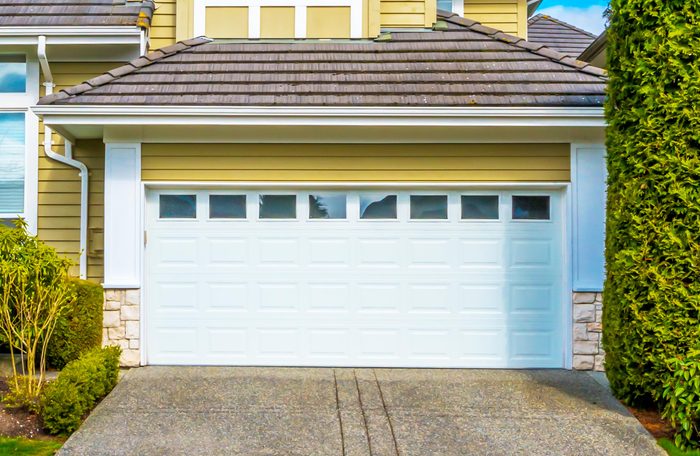
Your garage door opener
You’d never leave your house keys just lying around in the open yet many people leave their garage door openers visible in their cars—and your garage door opener is almost as good as the key to your front door, Paulsen says. Another garage issue is keypads with obvious signs of wear or using simplistic or repetitive passcodes, making it easy for criminals to guess your code and get into your garage and your house. In fact, nearly 40 percent of homeowners said they never change their garage codes, according to the Nationwide survey. Keep your openers out of view, pick difficult passcodes, and change them regularly. Some newer versions of garage door openers pair with your smartphone, eliminating the need for a separate opener all together.
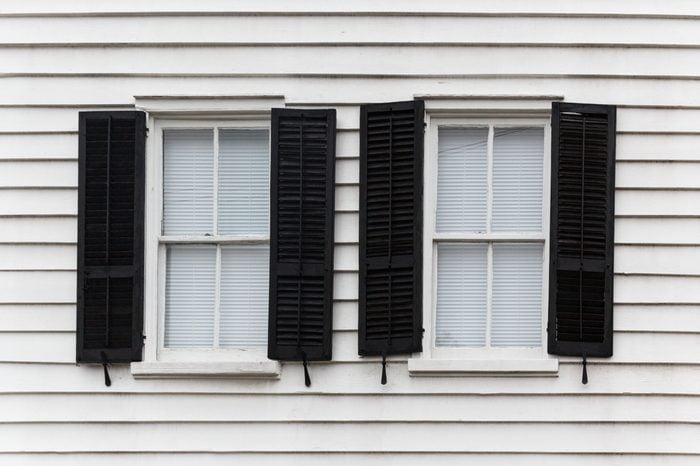
Your windows
First-level entry windows are the second-most common entry point for burglars because it’s relatively easy to jimmy a window open, Paulsen says. And even people who are diligent about locking their doors will often leave a window cracked open, especially in warm weather. “A locked window is often enough to deter thieves but if you need some fresh air, install a window jam that will only allow the pane to be pushed open a few inches,” he says. You can also install alarms that let you know if your window is opened or broken while you’re away, he adds. You should also know and follow these 35 tricks to prevent big problems.
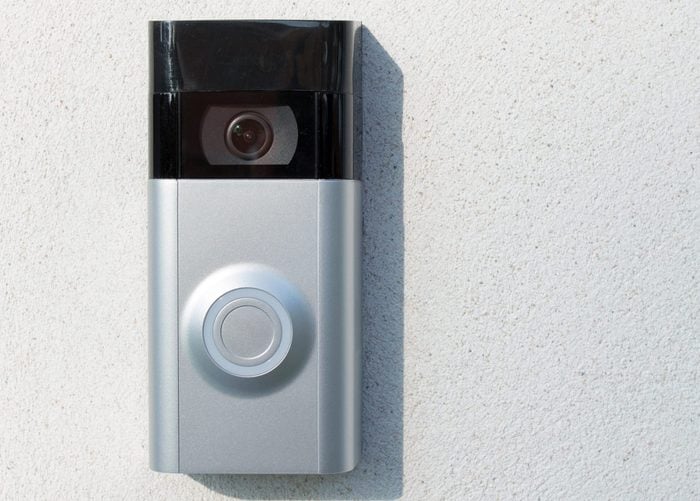
Your doorbell
Doorbell cameras are popping up everywhere and at first glance, it may seem like a great way to reduce all kinds of crimes in your neighborhood. Unfortunately, the reality doesn’t seem to support that, with independent research showing no decrease in break-ins or overall crime in neighborhoods that have the cameras, according to research published in MIT Technology Review. Researchers aren’t sure exactly why this is but Paulsen points out that the cameras can still be useful for many things, including helping you see who is at your door before answering it, so they are still worth having if your budget allows.
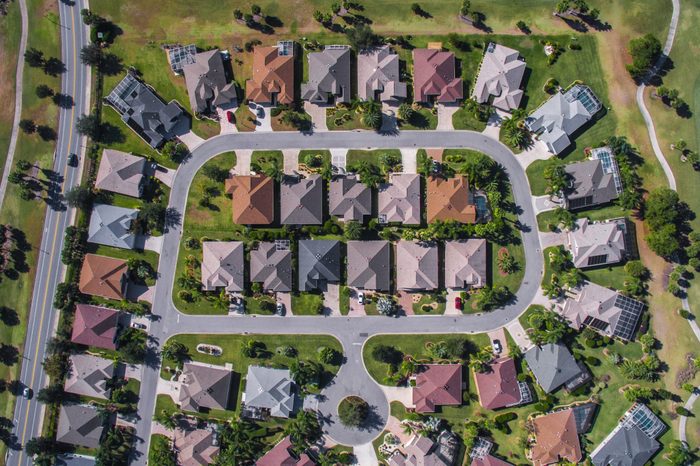
Your neighbors
Make friends with those who live around you, or at least a passing acquaintance, as watchful neighbors can be your best allies in home defense, Paulsen says. You don’t want to tell everyone when you’re headed out of town (especially not on the internet) but you do want to tell your plans to your neighbors and your neighborhood watch program, if you have one, so they can keep an eye out for strange behavior or people they don’t recognize.
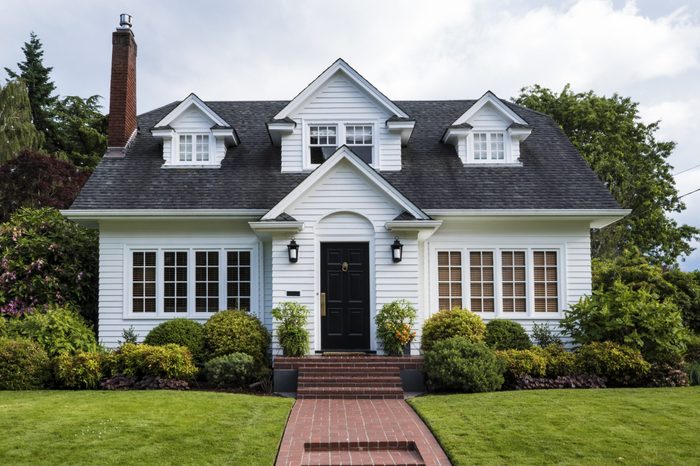
Your front yard
Having an unkempt front yard, littered with door ads, old newspapers, and weeds is a blaring sign that no one is home and one that criminals look for, Paulsen says. If you’re out of town, ask a neighbor to pick up any papers, turn lights on and off, and basically make your house look lived in, he advises. Or, even better, hire a house sitter.

Your vacation pics
One in four people admits posting pics and check-ins on social media while out of town, according to the Nationwide survey. And while putting your vacation pictures online might get you a lot of likes, it also notifies your friends and acquaintances that you’re now far from home, making your house a prime target for anyone with ill intentions or just an opportunistic streak. Instead, make sure your social media profiles aren’t public, set your privacy settings to max, and wait to post your beautiful beach selfies until you get home, Paulsen says. Here are some other things you should never post on social media for the sake of your own safety.
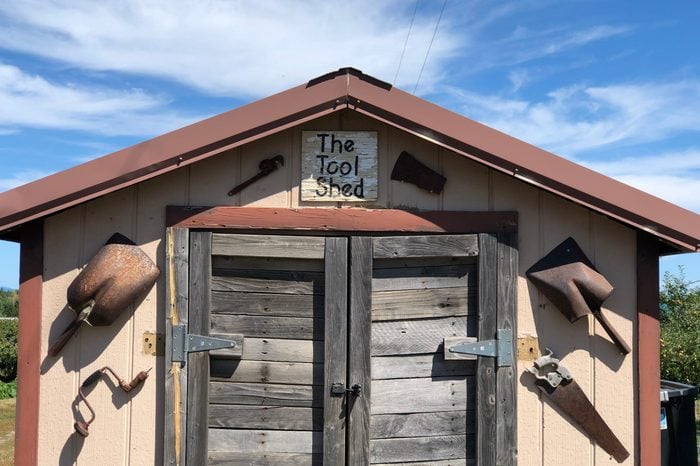
Your tool shed
Outdoor structures like sheds, detached garages, and patios make great targets for thieves as they’re less likely to be secured and usually contain expensive items like tools, bicycles, electronics, and machinery, Paulsen says. Make sure all outdoor structures are secured with a good padlock, he says, adding that it’s worth it to pay the extra money to get a lock that comes with a warranty. Some manufacturers offer a warranty both for the lock itself and for belongings that are stolen when the lock is broken by thieves, like these bike locks from OnGuard. Make sure to read the fine print on lock warranties and in your home owner’s insurance policy.
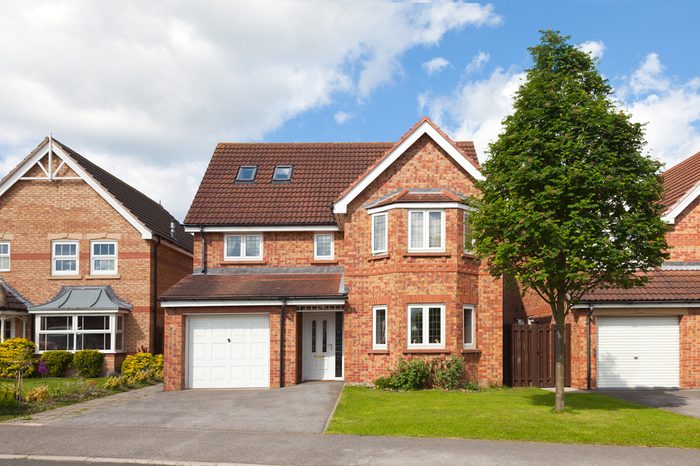
Your neighborhood’s age
Criminals tend to target newer neighborhoods and developments, hoping to take advantage of residents who are new to the area and might not be very familiar with it yet. This is especially true if the area is on the wealthier side. In addition, they target lower-income neighborhoods as security may not be as tight. Close-knit neighborhoods with long-standing residents, where everyone knows one another, are less likely targets. “This is even more reason to get to know your neighbors right away,” Paulsen says. “Give them your number and make sure you have theirs.” The most common time of the day for burglaries is probably not when you think.
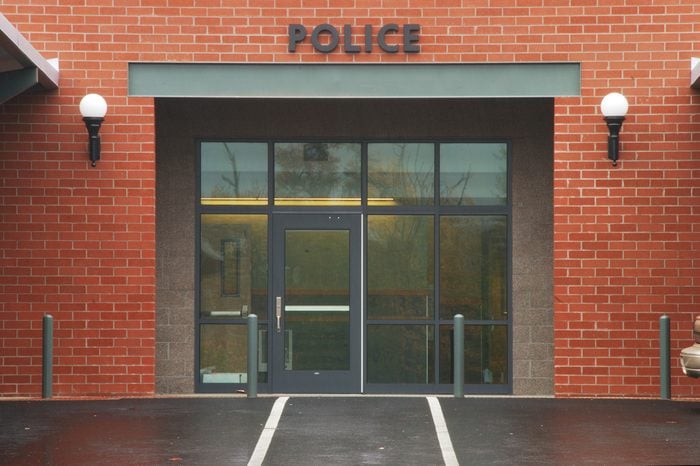
Your neighborhood’s crime history
Certain neighborhoods are more vulnerable to certain types of crimes, and that is especially true for burglaries, according to the FBI. (The FBI allows you to check property crime statistics for your area by state or by metropolitan area.) A quick glance at the weekly police blotter (or a quick call to your local precinct) can give you a heads-up to whether cars or computers are the hot commodities in your place, and then you can take specific steps to protect yours. For example, one neighborhood experienced a rash of car break-ins and people used social media to point out the pattern, warn their neighbors, and share tips.
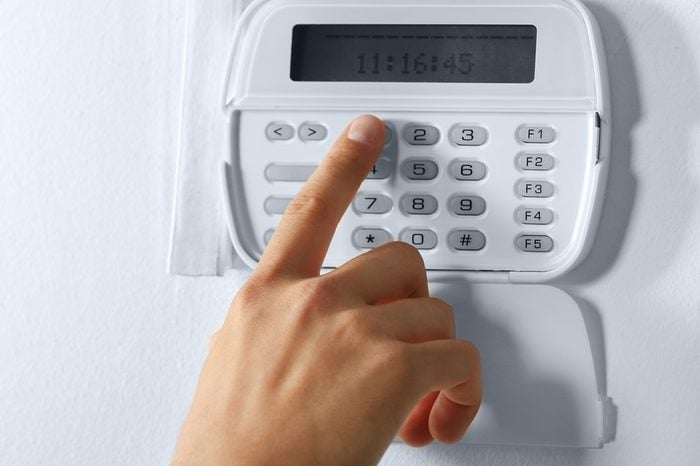
Your alarm system
Simply having an alarm system won’t help you if you don’t use it, and 30 percent of alarm owners say they don’t bother activating it when they leave home, according to the Nationwide survey. In addition, nearly half reported almost never changing their code. Forget the old trick of having a security sign in your front yard—thieves are wise to that game and will still try the doors and windows, banking that you’re bluffing or forget to turn it on. You have to arm your alarm every time you leave your home. These 13 security tips could save your home from a break-in.
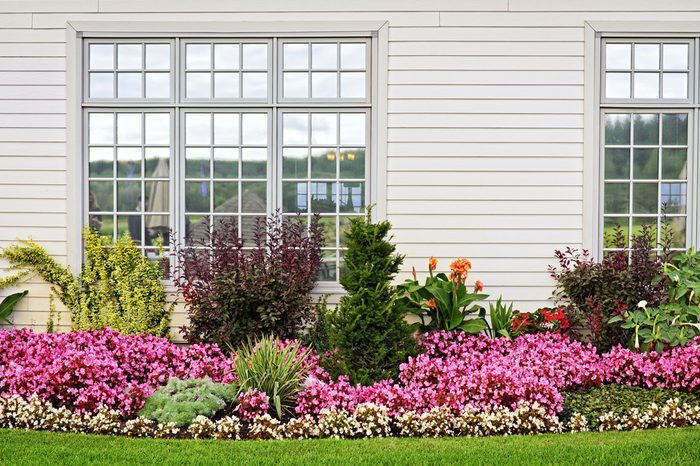
Your landscaping
Tall, lush greenery is great at protecting your privacy from prying neighbors, but it’s also great at hiding burglars, Paulsen says. Thieves specifically target homes with shrubs or trees that grow thickly around the front or sides of the house, so keep yours trimmed away from walls and below window height—even if that means having to wave to Ned and Nancy over your morning coffee. Also, having a well-maintained yard indicates that you’re vigilant about your home and likely paying close attention to it.
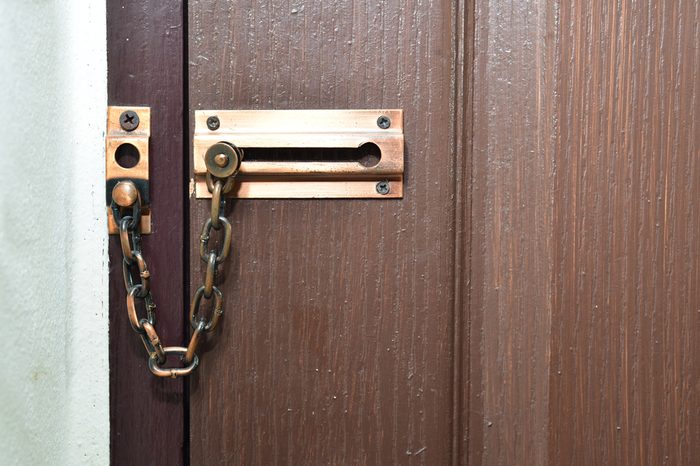
Your door locks
Time is the most important factor in a successful burglary—the average thief is in and out in less than ten minutes. Picking a regular door lock is a piece of cake for most experienced burglars, but most won’t want to waste precious minutes messing with a deadbolt or more secure lock, Paulsen says. If it takes them more than a minute to get in, chances are the next house will be easier and they’ll just move on, he says. For maximum effectiveness, make sure you have the extra locks installed on all exterior doors—not just the front.
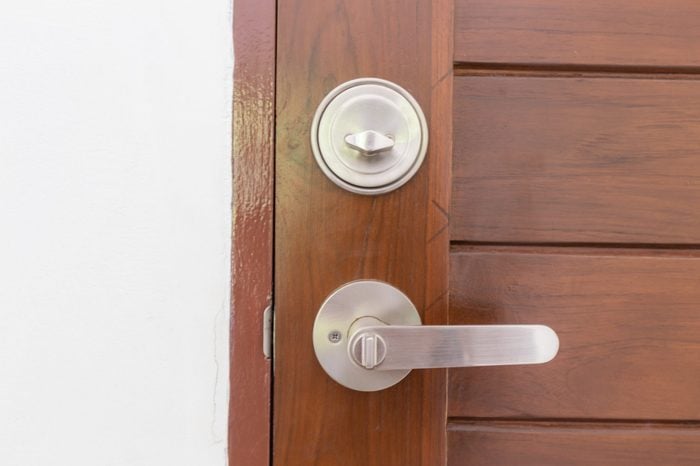
Your door plate
The strike plate is the piece of metal that holds the bolt when your lock is in the locking position—and unfortunately standard ones are very small and flimsy, making your door easy to kick in, Paulsen says. “This is an easy fix, just go to any home improvement store and get a bigger strike plate,” he says. For additional protection, you can purchase a door reinforcement kit for under $100 that will shore up the weak spots that thieves commonly exploit.
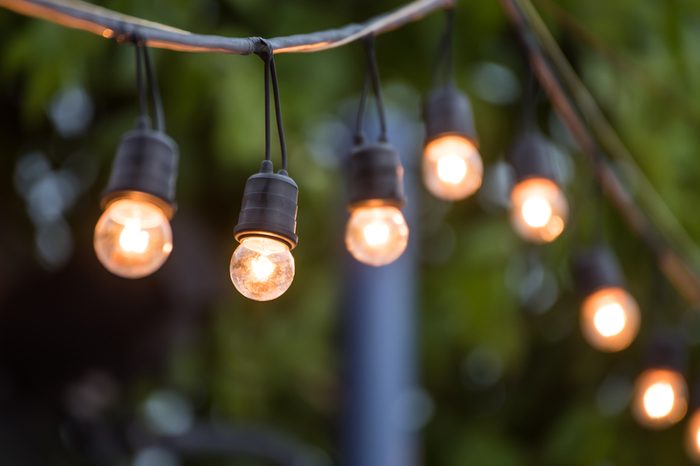
Your outdoor lights
At night, a burglar’s best friend is a dark home, according to Nationwide’s research. Fortunately, deterring criminals banking on the cover of darkness may be as simple as turning on your outdoor lights at night. Not a fan of wasting all that electricity? Go with motion-activated floodlights, especially in your backyard or dark corners of your home, Paulsen says.
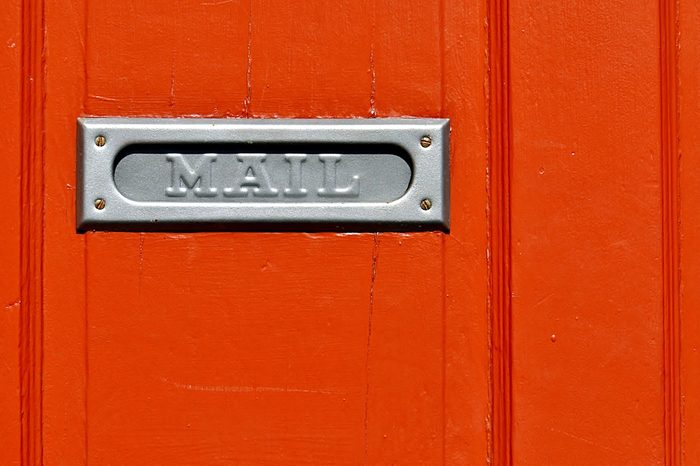
Your mailbox
It takes two minutes online or on the phone to put a hold on your mail while you’re gone and subvert the number one signal burglars look for: an overflowing porch or mailbox. These are the hiding spots burglars check first.
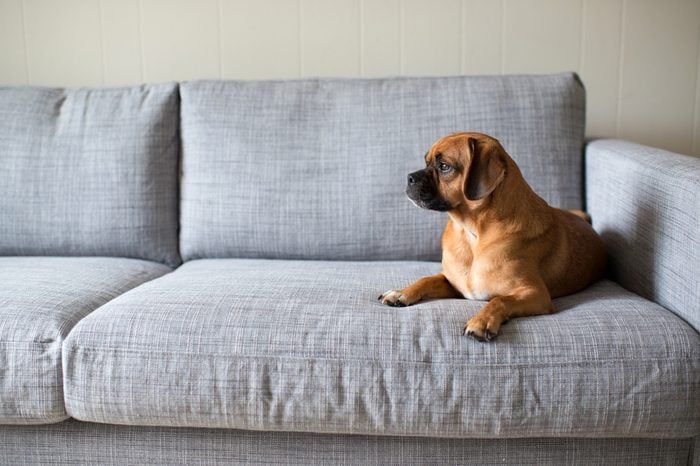
Your dog
Dog owners, you’re in luck: A survey of 86 convicted thieves found that a “large sounding” dog is the single greatest deterrent to robbing your house, Paulsen says. And that goes for small, noisy dogs as well as larger, threatening-looking ones. If you can’t or don’t want to have a dog, you can buy a dog barking machine and set it to respond the doorbell or knocks or put it on a motion sensor, he advises. “Even a ‘beware of Rottweiler’ sign in your front window can help,” he adds. Next, learn 13 signs a would-be burglar is watching your house.
custom-tracking =
